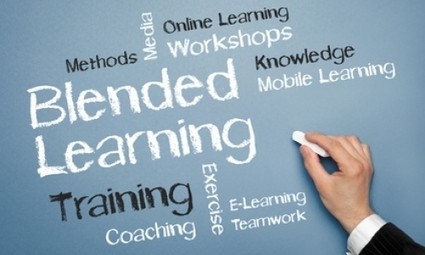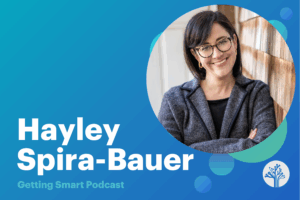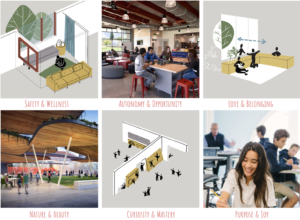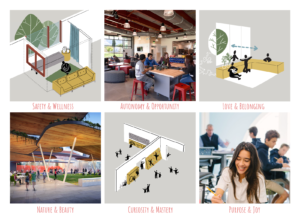Blending Alone: How to Blend in a Non-Blended Environment

By: Mark Engstrom
Sir Ken Robinson. Sugata Mitra. Carol Dweck. Salman Khan. Daniel Pink. Clay Christensen. If you are like me, you are on board with the research and philosophies of these reformers who collectively have helped mold, in some way or another, the blended learning movement. But the reality is that most schools are still educating students in a factory-model fashion. So what do you do if (like me a couple of years ago) you are a teacher and you want to blend the learning experience for your students, but are teaching in a traditional school setting? The answer… you blend anyway. Here is a guide from someone who has done exactly that- blended learning for students in a non-blended environment. I can tell you that the following pieces of advice aren’t the result of strategies that worked out of the gate, but rather iterations of ideas and mistakes driven by the idea that blended learning is what is best for students. So the question is, what needs to change to make this transition as smooth as possible for all involved?
Changing the lens for students
Instead of a course syllabus or description, I’ve found it more useful to give students a “roadmap for success”. Here is an example from my middle school Geography class. The idea is that all learning options are clearly laid out and routes for success are made clear. It is well worth spending a class or two clarifying what the journey will look like in a blended learning environment and I’ve found that this reframes the experience for students in a way that they understand. It also lays the groundwork for the one-on-one conversations you will have with students moving forward. You will want to delineate the different segments of the class, discuss possible timeframes for moving through the challenges and what the options are for demonstrating mastery at each stage. In this particular roadmap, some items are bold because they will be done by all students. Other components are framed by a dotted line meaning that only some students will be eligible for those challenges based on their progress at specific stages. You will want to make the roadmap as clear as possible so students are able to understand the journey to the point where they develop a sense of agency around their work.
Changing the lexicon
One of the early challenges will be changing the lexicon around the learning in your class so that it reflects both personalized learning and a growth mindset. “Do we have to… (print it out, take the quiz, work with a partner, etc.)” are the first four words that most students use when framing learning activities. Emphasizing the importance of a growth mindset vocabulary will be key to helping students make the transition to blended learning smoothly. They will get comfortable with phrases like “Do I get to…?” or “If I decide to do x, then does that mean y?” (e.g., “If I take the quiz today, then does that mean I can work through the portal tomorrow?”). Deadlines may become trickier if part of your blended learning model means it’s self-paced. Questions like “When is it due?” become “Should I have it done by Thursday?” or “Does two weeks seem like a reasonable time for me to get this done?” There is a good chance that you will spend a considerable amount of time working with your students on this. Some will adjust their lexicon early on and lead others in the linguistic transition. If your class is like mine, others will spend the last moments of the last class still struggling to refer to their own journey in a way that demonstrates ownership.
Changing the lens for parents
Probably the second most important discussion you will have about this transition is on Parents’ Night/Open House (the most important one will be the one you have with your students on the first day of class). At that event you’ll want to a) give some examples of research that supports blended learning and b) have some concrete samples of the different types of work that students will produce and c) demonstrate what assessment will look like. If you cover these three components, then my experience is that parents are thrilled about the change. It’s hard to be unhappy with a system grounded in phrases such as “personalized learning”, “self-paced” and “student choice”. Most parents will be excited about the opportunities that this new structure will provide their children.
The need for you to reframe your students’ learning experience won’t just be at formal settings, but impromptu ones as well. A PTA parent asked me the following question at a dinner party a couple of months ago- “Your students have a project due next week, correct?” This particular mom didn’t have a child in my class and hadn’t spoken to me about any aspect of my class before. At that point I felt the need to explain the structure of a self-paced blended learning environment. The fact that my students are tackling different challenges on different schedules is obviously a hard concept to grasp if you are only familiar with traditional schooling models. To make it more awkward, there were multiple parents in the room and they soon made their way into the conversation. It all ended well, but the lesson here is that you’ll need to be prepared to explain why you are doing things outside of the norm at your school. These moments can happen at any time, as I found out, so you need to have your elevator speech prepared and ready to go.
Changing the data
The curriculum software that you use probably isn’t set up to accommodate a blended learning course. The software setup for you to input grades is also likely designed for traditional schools as well. You’ll need to do some square peg/round hole problem solving on this front. In my case, that involved plenty of attachments to our Rubicon Atlas curriculum software (in sections that somewhat made sense) and many “x or y” categories/columns in our grading software, Veracross (sample). Accurate data for parents and administrators will be paramount, as you’ll want to have clear communication about student learning in your class during this transition.
Changing the student learning experience
Obviously this is the most important aspect of the transition. Luckily, you already have firsthand knowledge about the online resources and software appropriate to your subject/grade level and know how well they work for your students. You will combine that data with research about what digital tools are available (indeed, that is what most of the online chatter about blended learning seems to be about) and you can then decide what digital components will be used to enhance the learning experience for your students. You will have to be intentional about what online resources you choose and how, exactly, the students will engage with them. The second post in this series will discuss websites and professional development opportunities that will be great places to continue that journey. Here is the latest version of the website that I use to help my students as you may find some aspects of the layout helpful to your own situation. You should also check out The Clayton Christensen Institute for Disruptive Innovation’s Classifying K-12 Blended Learning. It’s a great guide to the choices that you’ll make around the specific learning that your students will experience.
Mark Engstrom has 18 years of experience teaching in public and independent schools on three different continents. He is currently a Geography Teacher and the Middle School Assistant Principal at Graded- The American School of Sao Paulo. He can be reached through Twitter at @markaengstrom or e-mail at [email protected].







Julie Zedella
Thank you for sharing your methods of implementing blended learning. After 4 years in the classroom, i particularly appreciate the attention to the change in student mindset. I was amazed how fixated even 5th graders have become on traditional assessment. Great work.
Elizabeth
Love the idea of the roadmap. Alternative routes to arrive at the same destination. I can see the opportunities for students who are generally not engaged learners to excel by choosing paths more to their personal style. I applaud your options and hope your students appreciate the work you put into preplanning this for them.
I would love to be able to apply this to some of the training I provide in a retail environment. I believe with many different learning styles, comfort levels with speaking in a group, and nerves at writing poorly designed tests that having options would better suit most adult learners.